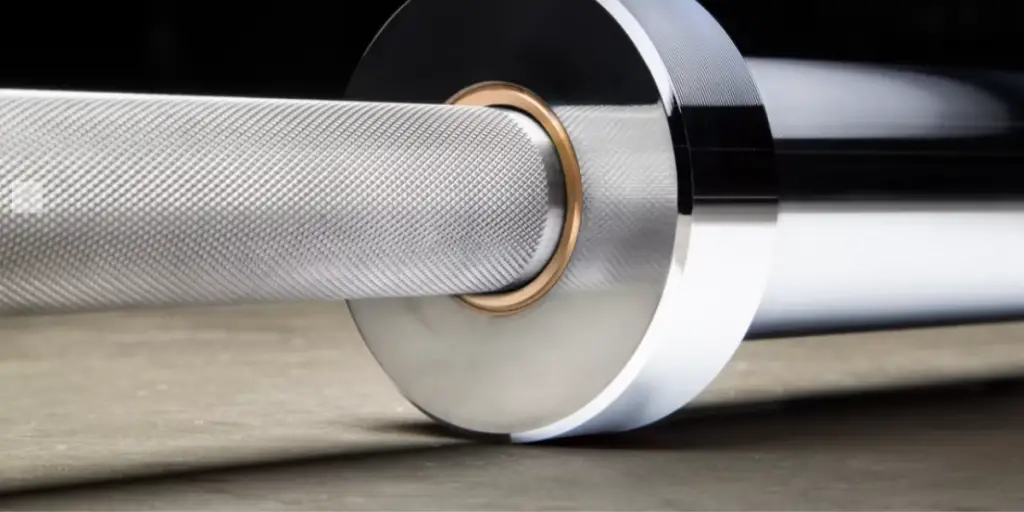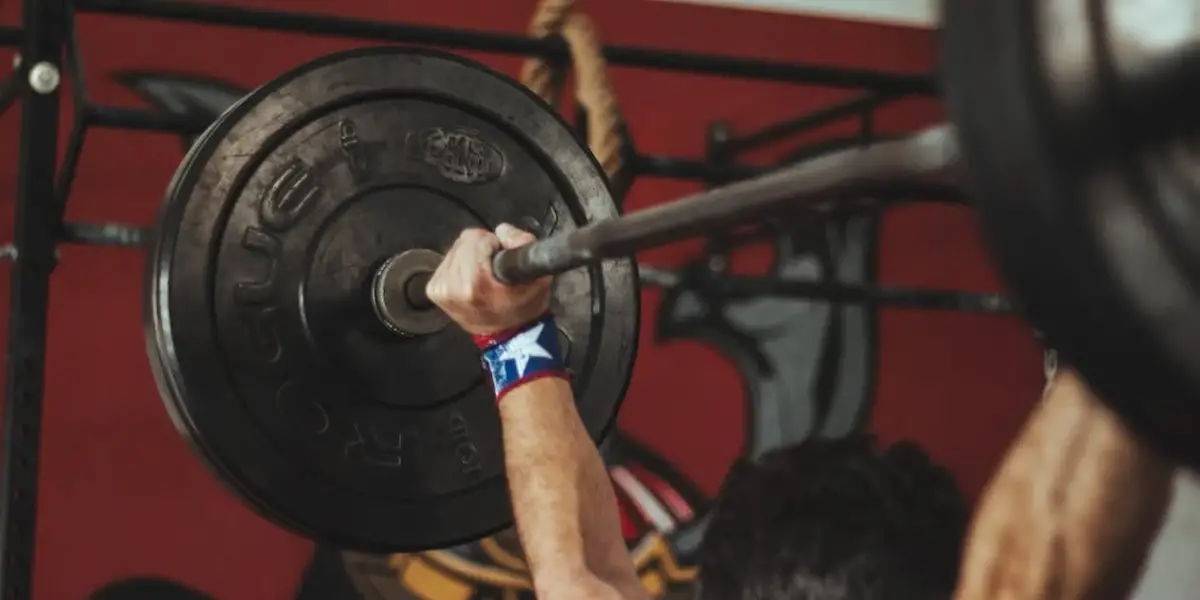Why Do Barbells Spin?
The outsider may assume that weightlifting is pretty rudimentary. Not necessarily in a bad or offensive way of thinking, just in general observation. At the end of the day, to some, it’s all about lifting and dropping. However, weightlifting is more complex and intricate than you might think.
Barbells spin to keep the excess torque off of your wrists, hands, and even your forearms and elbows to a degree. It’s all about the physics of lifting. The spin keeps you from having to rotate the bar as you bring the weight up.
Doing curls is a good example of this. As you curl the weight up, the spin helps you maintain your grip in the same position without having to turn the bar as the weight comes up. As you can see, that would do a lot to keep the torque off your wrists and provide you with a purer lift.
What Does Barbell Spin Mean?
Barbell spin means that the bar between the two sleeves (the portion of the barbell that holds the weights) rotates as you lift. This spring keeps the bar aligned in your hand without you having to physically muscle it (using your wrists, forearms, and elbow tendons) each time you lift it.
It’s designed this way more frequently in Olympic barbells. In fact, in weightlifting competitions, this level of spin is necessary. It turns the entire focus on a weightlifter’s abilities with a single muscle rather than a complex variety of muscles trying to turn a bar.
Do All Barbells Spin?
Not all of them do. When it comes to weightlifting competitions, the barbells used all have spin. So the focus is on individual muscle groups while not straining muscles that are not the focus.
It’s common to run into barbells that are one solid piece, with the weights welded onto the end, or straight bars that lack any degree of spin. Olympic bars, with the larger sleeves, almost always spin, however.
Benefits of Barbells for Popular Lifting Techniques
Barbells offer many different benefits, mainly when focused on specific techniques or muscle groups.
- They save time by working multiple muscle groups with a single motion
- They improve cardio with specific exercises
- They’re simple, and sometimes that’s exactly what you need
- They’re versatile and adaptable from adding weights to drop-sets
- Perfect for squats and deadlifts due to even weight distribution
- A more comprehensive range of resistance than machines
- It’s more difficult to deviate from a range of movements
Barbells offer weight trainers the ability to stick with free weights without all of the headaches that machines involve. Instead, they’re simple tools for keeping things simple and precise yet versatile.
Olympic Lifting and Power Lifting
Spinning barbells are no-brainers for Olympic weightlifters. It’s simply a matter of focus. As we mentioned above, barbells offer precision without sacrificing versatility. For instance, let’s use a standing curls activity as an example.
With a machine, it’s difficult to lift eight repetitions without the slightest change in motion, whether it’s a straight bar against a cable or separate handle grips on a rubber band.
Likewise, a barbell curl only focuses on the bicep and the bicep.
The spin reduces the focus on wrist, forearm, and elbow torque while zeroing in on the muscle being worked in the competition. Powerlifting is similar, but it’s much more important to have spin.
Enthusiast/Recreational
Enthusiasts and recreational weightlifters shouldn’t worry one way or the other about the type of barbell being used. For one, spinning barbells are far more crucial in focused, heavy weight lifting, powerlifting, and anaerobic-focused weight training in general.
But it also boils down to personal preference. It’s worth trying standard barbells and spinning barbells to figure out what’s best for you and what you’re more comfortable with.
There is nothing wrong with using a spinning barbell as a fitness enthusiast and occasional weight trainer.
Crossfit
It’s hard to say what you’ll get in the various Crossfit stations unless you go through it beforehand. No matter what, it’s always worth checking with the gym staff or owners to see what kind of weights they use in their Crossfit boxes.
It might catch you off guard if you aren’t used to lifting with spinning barbells. Balance is key if there is one negative thing to be said about spinning barbells.
The spin can easily catch you off balance, especially if you fail to hit the correct motion for a particular exercise.
3 Barbell Maintenance Tips for Smooth Spinning
Barbells can spin because they feature ball bearings inside the sleeves, where they meet the bars. Remember that these are metal-on-metal moving parts, which means preventative maintenance is necessary.
- Wipe the sleeves and bar down after every workout routine
- Wipe the sleeves and bar again with a rag soaked lightly in oil
- Spray or inject oil (some bars have little holes for this) where the sleeves meet the bar
You keep the bar clean to avoid rust, dirt, and debris from making their way down into the ball bearings. The oil should be a part of your regular maintenance to keep the moving parts well-lubricated.

How to Disassemble a Barbell
Not all barbell sleeves actually come off. In fact, most of them don’t. If yours does, such as the Rogue Fitness barbell and Olympic-style barbells. For either, you will need special snap-ring pliers to release the snap ring or to push a pin out of the end cap.
A hammer and screwdriver are more than enough to remove the pins. Once the snap ring or pins are removed, the sleeves should slide right off.
Barbell Spin – All Things Considered
Do Barbells spin? Of course they do and for good reason. Barbells spin because they are designed to spin.
That design aspect is both a safety feature and practical when weight training. The spin helps lifters maintain their body and spine alignment, focus on a single muscle, and avoid excess torque in the wrists, elbows, and forearms.
FAQ – Do Barbells Spin
Reference And Citations
FAQ. CrossFit. (n.d.). Retrieved December 5, 2022, from https://www.crossfit.com/faq
- 5 Best Power Towers For Your Home Gym - July 19, 2023
- What Does Natty Mean in Body Building? Is It Good or Bad? - June 26, 2023
- How Much Creatine Is In Bang? The Amount Might Surprise You - June 25, 2023

